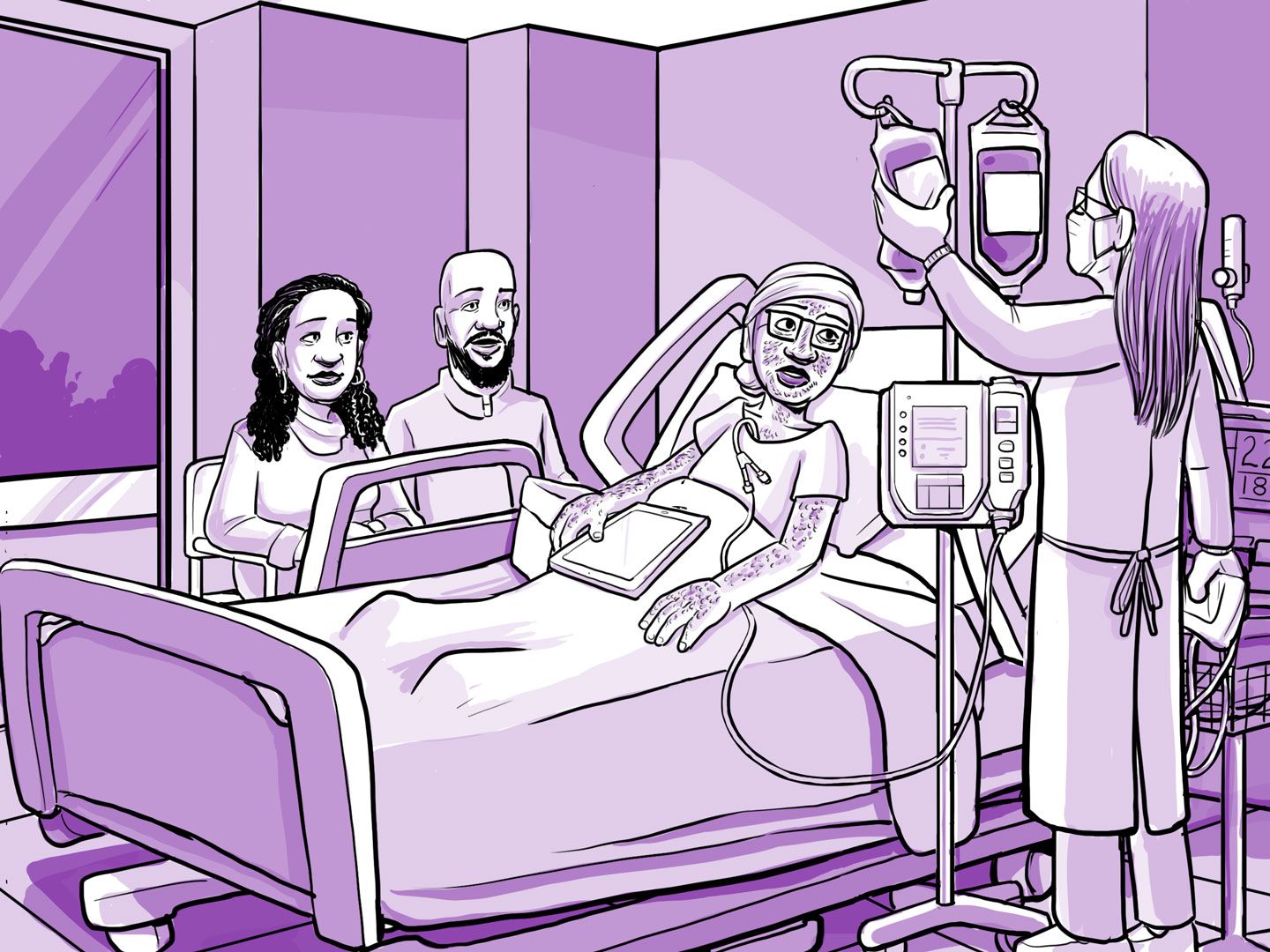Month 6
Nia is 13
Month 6
Nia is 13
Nia does not feel well. She gets a skin rash, dry eyes, and diarrhea. These are symptoms of graft versus host disease. Nia’s doctors are ready and give her medicine to reduce her symptoms.
Graft versus host disease (GvHD) is a common problem.
- It can happen to 20% to 30% of people after a transplant, even if you take all your prescribed medicines regularly.
- Some people have problems for a few months, and others can have problems for years.
- The medicine does not work for some people, which means they could get very sick or die.
If graft versus host disease (GvHD) happens, you can have:
- Rash and skin ulceration
- Diarrhea
- Yellow skin and eyes
- Dry and scaly skin
- Darkening of skin
- Hardening of skin texture
- Skin scarring/restriction of joints
- Dryness and sores in the mouth and esophagus
- Dry eyes and redness in the eyes
- Dryness of the vagina and other surfaces
- Drying and scarring of lungs
- Liver injury or liver failure
Graft versus host disease (GvHD) is when the donor cells attack your body.
- The donated blood-making stem cells make immune cells that ‘attack’ your body.
- These new white blood cells can get confused because your body is not the same as the donor’s body. This is why they can attack your body.
- The bone marrow transplant can still work, even if you have this problem.
- Your doctors will give you medicine to try to prevent it or stop it if it happens.
- People may need to take these medicines to prevent or treat GvHD for several months after transplant.
